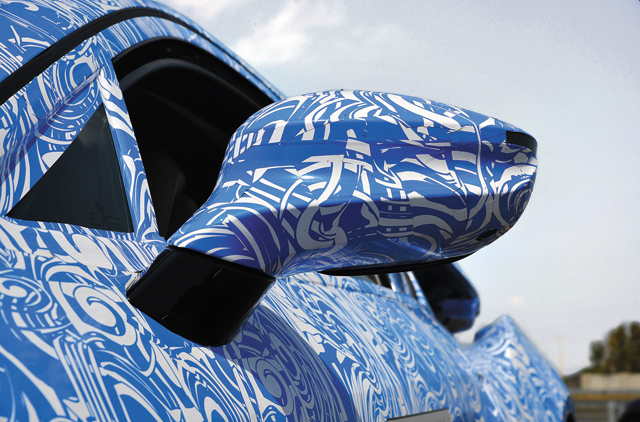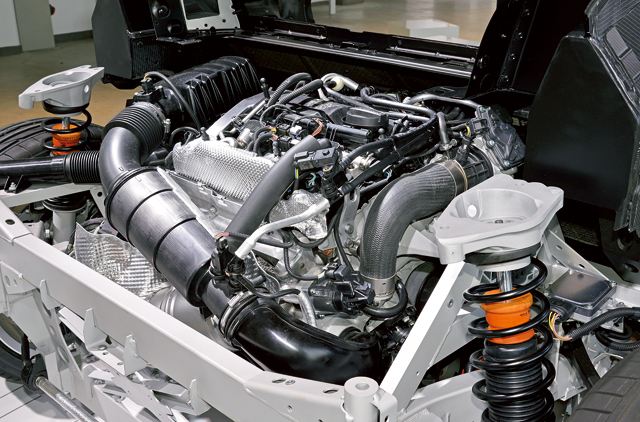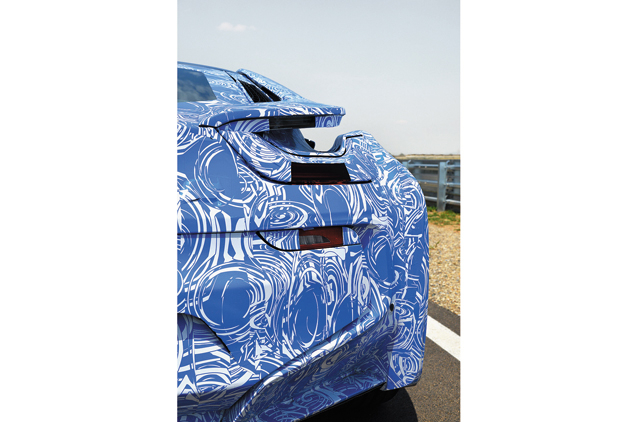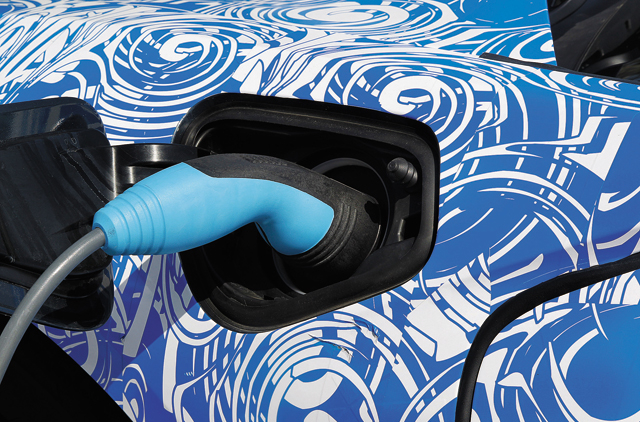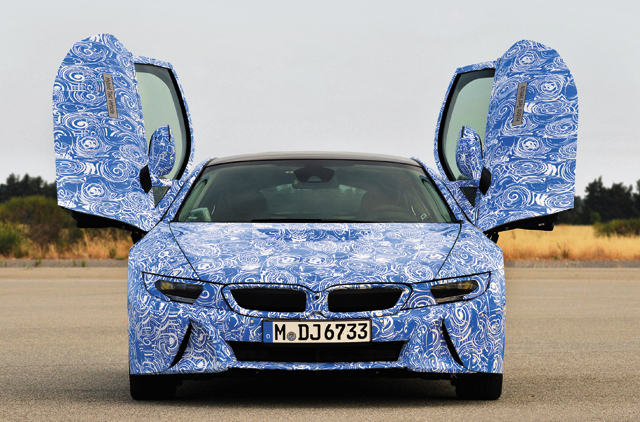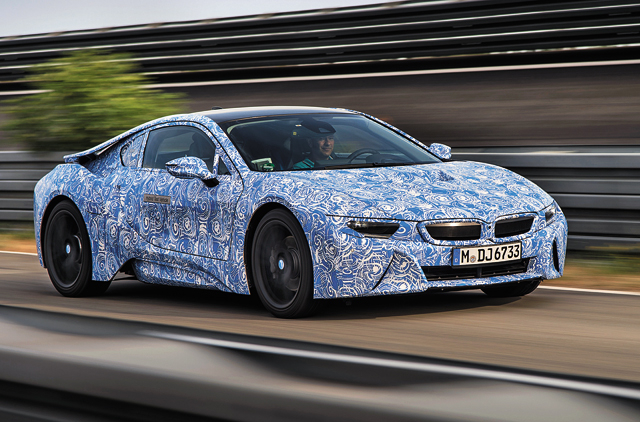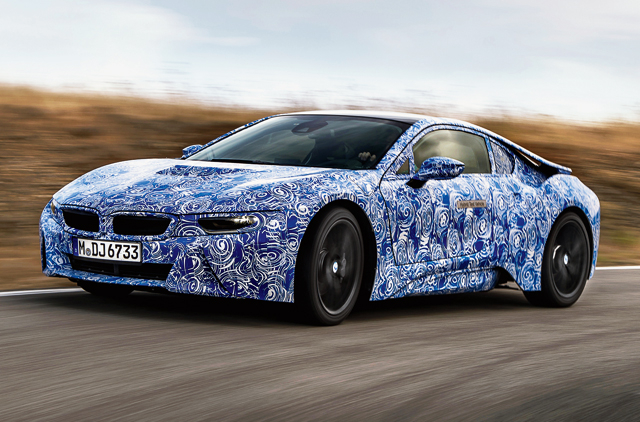
Having recently driven the inaugural effort from BMW’s green ethos-focused ‘i’brand, I wasn’t hugely convinced by the proposition of owning an i3 Megacity hatch. Oh, don’t get me wrong; in isolation the little battery-electric urban car is a superb piece of kit and a marvel of modern engineering. Out on a German runway, with the knowledge there’s an army of BMW technicians on hand to sort it out if the i3 runs out of charge, you can enjoy the seamless acceleration, zero emissions running and futuristic appearance inside and out, without a care in the world about how realistic it would be living with one of them day-to-day.
But given the lack of a charging infrastructure in the Middle East, BMW isn’t even going to offer the i3 for sale here. At least not yet. It’s another one of those worthy, ‘close but no cigar’ green cars: great on paper, but perhaps best left there too.
M-brace the new BMW M4
Grudge match: BMW M6 Gran Coupe vs Mercedes-Benz CLS 63 AMG
However, the i brand is here to stay and the next stallion out of this particular stable is a hybrid promising extra usability. But more importantly than that — and more critical to long-standing fans of BMW — this one promises to be a belter in the dynamics department. It’s the i8, a mid-engined plug-in hybrid that utilises both petrol and electric motors for propulsion. And we were given the chance to drive a pre-production model (it’s expected to go on sale in early 2014) to see just how exciting this 21st century supercar is going to be.
Styling-wise, unlike the i3 there’s familiar BMW design language here — ‘faux’ kidney grilles, a long, tapering bonnet, the Hofmeister kink in the rear three-quarters — but then there’s also a whole plethora of new, aero-inspired additions, such as the hidden Air Curtain ducts in the one-piece front bumper and the arresting Rear Aero Layers that swoop down either side of the rear windscreen, all of which give the car a slippery coefficient of drag of 0.26. With its snarling, tapered nose and high haunches, there’s a genuine supercar aura about the long, low and wide i8, which bodes well for the rest of the experience.
Inside is as yet unfinished but the test cars had reasonably conventional cabins, with an auto stick shift, iDrive screen and all the switchgear you might find in any normal BMW. More important is the seating height, which is right down on the ground, making for a perfect supercar driving position. Moreover, with the lithium-ion battery housed in the central console and the seats on the deck, the centre of gravity on this beast is a mere 460mm above the ground.
The tech on the i8 is impressive, and there’s an extensive weight loss programme enacted throughout in an effort to make sure its twin motors can propel it along swiftly enough. A carbon-fibre Life module sits on top of an aluminium Drive module, with lightweight plastics, foams and carbon weaves used in every nook and cranny to shave kilograms at every conceivable juncture. The aim is for the finished production car to weigh less than 1,490kg, with balanced 50:50 weight distribution.
That lightweight goal means that the car should be exceptional in all dynamic measures, such as performance, handling, braking and ride. And starting with the first of these, the Drive module houses an electric motor at the front while at the back there’s a 1.5-litre three-cylinder turbo petrol engine, developed from the 3.0-litre BMW straight-six no less.
The i8 is actually a four-wheel drive vehicle, as despite there being no mechanical link between the axles, the electric motor propels the front wheels while the petrol engine drives the rears. A control system constantly moves the available grunt to the wheels with the most grip, thus ensuring maximum traction.
The motor is the same as in the i3 but detuned to around 131bhp, some way down on the 170bhp the smaller i-car possesses. But then the 231bhp petrol engine works with it, giving the i8 an impressive 362bhp overall and a power-to-weight ratio in the order of 240bhp per tonne. That’s a big figure by anyone’s standards, and in practice this hybrid drivetrain delivers phenomenal results. The i8 has incredible go at any revs, largely due to the fact the motor’s maximum 250Nm of torque is available from the instant you touch the throttle. With the charismatic, lag-free three-pot petrol engine burbling away at the back, the i8 goes like stink and makes a decent noise while doing it.
BMW’s end target is to have a car that can tick off 0-100kph in less than 4.5 seconds, and go on to an electronically limited 250kph. This all feels very plausible, as the i8 thundered up to 170kph on a short straight at the Miramas test facility in France and felt like it had plenty in reserve. Who knows what it would ultimately be capable of if freed of its limiter?
Things get even better in the corners. With minimal roll, ultra-precise (if overly light) steering and that monumental all-wheel-drive grip, the i8 devours bends with vigour. There’s a slight sense that the nose is not yet as keyed in as the rest of the car, as in slower curves you can sense fuzzy turn-in if you’re brutal with the i8’s steering wheel. But as long as you drive around that, it will not understeer mid- to late-bend, allowing you to fire out of apexes at astonishing pace — indeed, a BMW drivetrain engineer said the car will oversteer if pushed, and the back end certainly felt lively enough to be a big help in adjusting your cornering attitude.
There’s also plenty of feedback from all quarters bar that electric power steering; albeit the system has consistent weight to allow you to place the precisely i8 despite this.
The brakes — which can charge the battery under certain conditions — work in the more important way for a keen driver, hauling the i8 down from very high speed with little fuss, while the conventional six-speed auto transmission out back (there’s a two-speed reduction gear drive for the motor at the front) is as peerless as all BMW self-shifters, velvety in its changes and quick to respond to throttle inputs. The car is seamless shuffling from electric to hybrid running, has a decent ride when you’re not thrashing it and even the shifting of power by the all-wheel drive system feels intuitive and natural. BMW says the i8 will need more work before it goes on sale; take it from me, even at this stage it’s a frighteningly capable and hugely entertaining machine. With tweaks, it could be a world-beater.
What makes it a much more feasible companion for those of us who like BMWs, but who want to move into the 21st century with the masses, is it’s very reliance on the traditional mid-mounted internal combustion engine. With a full tank of petrol and a full charge in your battery, the i8 will cover more than 500 kilometres when driven moderately in hybrid mode, returning an incredible claimed combined consumption figure of 2.5 litres per 100km and CO2 emissions of just 59g/km. You can drive it in pure electric mode, where it will give you around 35km of range in pure silence and with zero emissions, but in reality this is not its forte and the petrol engine will be working most of the time.
The petrol lump charges the battery when you are not demanding full power from it, which has led BMW to claim that — in road driving conditions — “there will not be a situation where the battery power is exhausted before you run out of petrol”, meaning you should never find yourself running a rear-wheel drive i8 with only a 231bhp engine to play with.
Charging the battery from external sources will take less than two hours with one of BMW’s i Wallboxes, and up to three hours from a wall socket, which sounds a lot better than the eight hours the i3 would take from a similar source.
Overall, I was stunned by the i8. Even in pre-production form and wearing ghastly disguise markings, you can tell it’s going to be brilliant. It’s fast, agile, comfortable, economical, powerful, entertaining, soothing and striking in equal measures, making it something of a Jack of all trades and master of them all too. With final fettling from a company like BMW, known for a litany of great driver’s cars over the decades, you can bet your bottom dollar this will be a sensation when it is unleashed on the world in early 2014.
The only issue revolves around its projected price. It’s likely to be thought of as a lot of money for a three-cylinder, 1.5-litre car, but you need to readjust your thinking on this one — this is the future of sportscars. They need to be fast and clean, and small capacity, big power applications like this are the only way you’re going to achieve such lofty aims. Instead, focus on the fact that this is the first mid-engined BMW since the fabled M1 of the Seventies, with 362bhp, a supreme chassis and all the tech you could demand of a premium product, and you’ll realise that Munich is once again readying a game-changing machine for imminent production.
I cannot wait to try the finished article, because it’s going to be exceptional.



